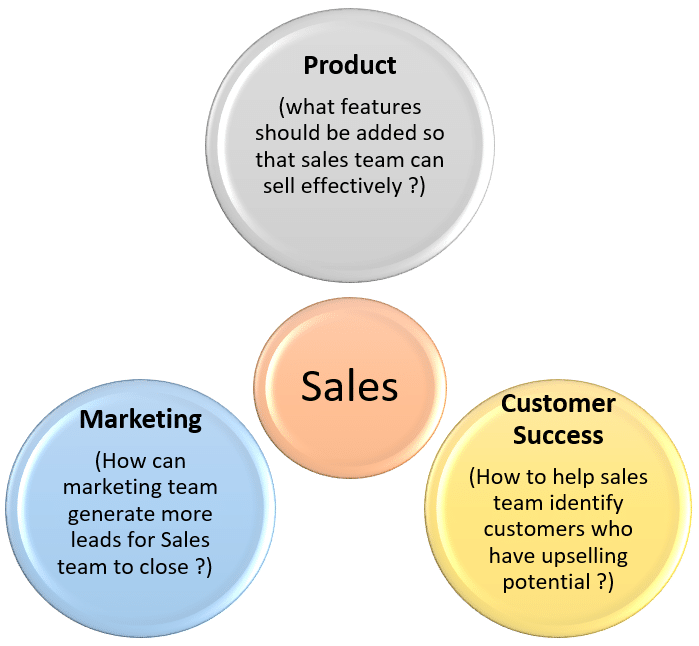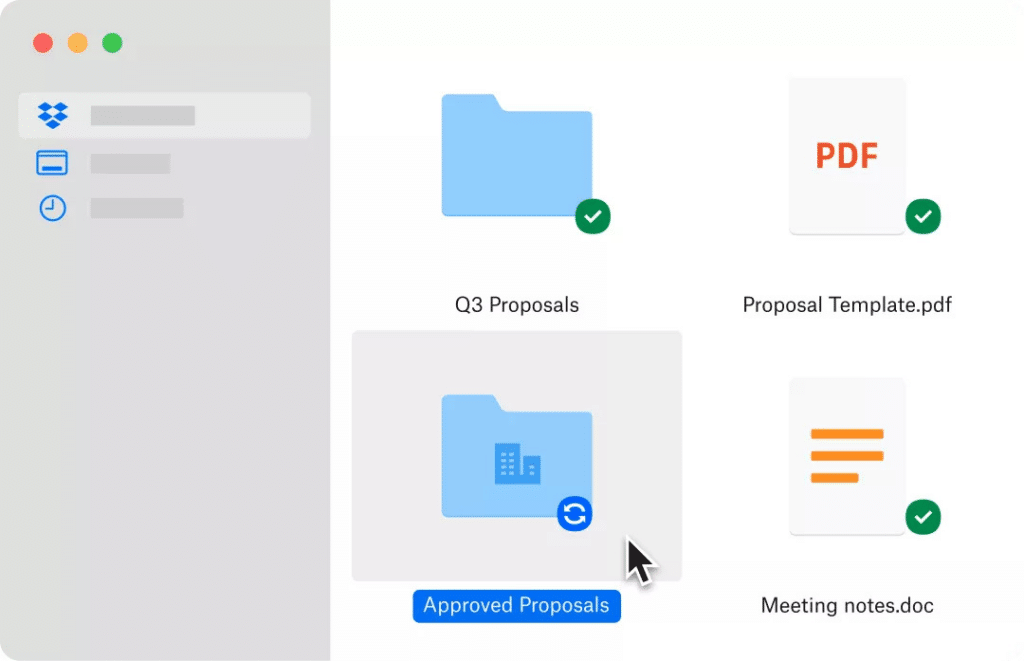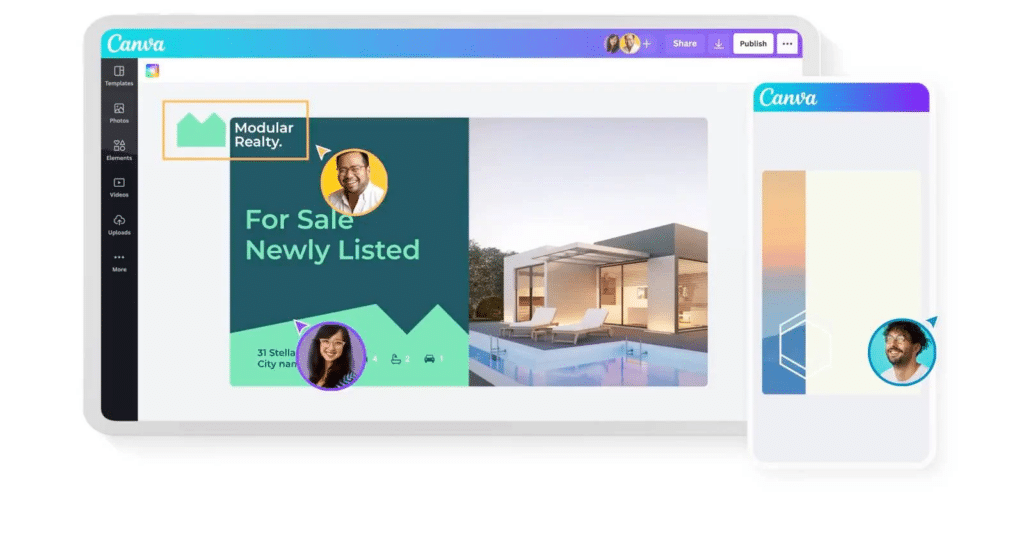The Complete Guide to Nailing Product-Led Sales (Definition, Benefits, Examples)

We have all observed how gravity keeps everything grounded. It’s an invisible yet powerful force that attracts every object toward the earth. Objects with more mass generate a stronger gravitational pull, drawing more things toward them.
In a product-led sales approach, your product is akin to gravity. It’s the invisible yet compelling force at the center of your sales strategy that pulls in leads (similar to how gravity attracts objects toward Earth). And the more substantial your product becomes – in quality, features, and value – the stronger its gravitational pull, and the more leads it draws towards it.
By definition, product-led sales is the preferred model for any company embracing a product-led approach. In this approach, you don’t merely articulate, but demonstrate how your product can alleviate the prospect’s pain points!
A classic example would be Slack, a communication platform that effectively employs a product-led sales model.
Slack’s product is intuitively designed and highly functional, offering an array of features such as organized conversations, file sharing, and integrations with other software. The platform also provides a freemium version, which grants users access to basic features. This allows users to experience and understand the value of the product before deciding to upgrade to a paid subscription.
Indeed, numerous businesses stumble and ultimately fall due to inadequate usability. Modern end users are not looking for lengthy meetings or demo calls that merely parade the ‘show and don’t tell’ principle. They desire to truly comprehend a product before they commit to buying it.
Consequently, SaaS B2B companies are gravitating towards product-led sales.
But what does this paradigm shift entail, and how is product-led sales different from a traditional sales-led strategy? It’s time to unravel the mystery:
What is product-led sales?
A product-led sales model propels prospects further down the sales funnel by placing the actual product at the heart of the experience. To put it another way, it’s a self-directed journey for customers, allowing them to experiment with the product before making a purchase.
As a bottom-up model, it provides immediate value to end users. Rather than expecting prospects to fill out a tedious form just to arrange a demo with a sales representative, the product-led sales model pivots towards a freemium plan or a free trial. This approach offers real-time, tangible evidence of the product’s value to potential customers.
Benefits of Product-Led Sales
Tailor-Made for Self-Service SaaS Products:
One significant benefit of a product-led sales model is its suitability for self-service Software as a Service (SaaS) products. It inherently prioritizes the product, allowing potential customers to explore its functionalities and benefits firsthand, typically through a free trial or freemium model. This approach aligns well with the self-service nature of many SaaS offerings, enabling users to familiarize themselves with the product and discover its value at their own pace and convenience. As a result, users are more likely to appreciate the product’s worth and consider a paid subscription, thereby increasing the chances of successful conversion.
Expands the Breadth of the Sales Funnel’s Opening:
A product-led sales model significantly widens the top of the sales funnel. By offering a freemium model or a free trial, a larger audience can experience your product without any initial financial commitment. This inclusive approach not only attracts a more extensive range of potential customers but also increases the likelihood of organic marketing, as satisfied users share their positive experiences with others. This broadened exposure amplifies lead generation and propels revenue growth.
Implements a Value Metric-Based Pricing Model That Motivates Your Customers to Continue Using the Product:
A product-led sales strategy often incorporates a value metric-based pricing model, which directly ties pricing to the value customers receive from the product. This could mean pricing scales with usage, number of users, or other metrics that reflect how much customers gain from the product. Such a model can incentivize customers to continue using the product, as they understand they’re paying for the value they receive. This transparent and fair pricing model enhances customer satisfaction and loyalty, leading to better customer retention.
Remarkably Reduces Customer Acquisition Cost (CAC):
Perhaps one of the most appealing benefits of a product-led sales model is its potential to significantly reduce Customer Acquisition Cost (CAC). Traditional sales models often involve hefty expenses related to sales teams, marketing campaigns, and lead nurturing efforts. However, a product-led sales model relies on the product itself to attract, engage, and convert users, which typically incurs fewer costs. The freemium or free trial models allow customers to experience the product’s value before committing, leading to a more efficient conversion process and ultimately, a lower CAC.
How is a sales-led strategy different from a product-led sales strategy?
A sales-led strategy positions your sales process, not the product, as the primary driver of business. In this approach, your company’s prosperity hinges on the effectiveness of your sales team.
In essence, your sales team shoulders the responsibility of generating leads through outbound and inbound efforts, qualifying these leads, and converting them via online product demonstrations.
As such, the sales-led strategy often resonates with companies seeking to carve out a new product category and educate their customers about the unique value their products deliver.
Key attributes of a sales-led model encompass:
- It flourishes in notably smaller total addressable markets
- When your product is still evolving, direct engagement with customers can yield valuable insights to refine your offering
- High-touch customer interaction ensures a comprehensive understanding of your product and its features
- Elevated CAC owing to the high-touch nature of the strategy, which can also lead to high Lifetime Value (LTV) and Average Contract Value (ACV)
- Comparatively low conversion rates
- The lack of a free trial option can sometimes lead to misaligned customer expectations, as customers aren’t always able to test the product beforehand


Prerequisites to Adopting a Product-Led Sales Strategy
When transitioning to a product-led sales model, understanding the landscape in which your product operates is vital. This knowledge will guide your strategies and shape how your product is presented to your prospective customers. The transition, however, isn’t simply about making your product available for trial or launching a freemium version. It requires a deep understanding of four key areas.
First, you must identify what compels your customer to buy. Every successful sale starts with a deep understanding of the customer’s motivation. This could be solving a problem, fulfilling a need, or addressing a pain point. It’s crucial to define the compelling event or value proposition that drives your customer to make the purchase decision. This requires comprehensive research into buyer behaviors, preferences, and decision-making factors. Understanding the ‘why’ behind customer purchases will empower you to tailor your product in a way that it appeals directly to their motivations.
Secondly, knowing your Ideal Customer Profile (ICP) pain points is essential. What challenges are your prospects facing that your product can alleviate? It’s crucial to identify these obstacles and clearly demonstrate how your product is the solution. These pain points serve as the cornerstone of your marketing and sales message. Your goal is to resonate with your audience’s struggles and illustrate how your product can transform their current situation.
Thirdly, identify and highlight the problems that your product can solve. Every product exists to solve a problem or fill a gap. For your product to shine in a product-led sales model, it should not only be useful but also offer clear and quantifiable value to the user. Identify these problems and ensure that your product offers effective, user-friendly solutions. This enhances your product’s appeal, as prospects can clearly see the potential benefits and outcomes of using it.
Lastly, have a short and crisp product tour ready. A product-led sales model thrives on the product’s ability to sell itself. Prospects should be able to understand your product quickly and easily, so creating a clear, concise product tour is vital. This tour should guide prospects through the product, showcasing its key features, benefits, and the value it offers, all in a time-efficient manner. This serves as a first impression and a ‘try before you buy’ opportunity for your prospects, increasing the chances of conversion.
How B2B SaaS Can Transition to a Product-Led Approach
1- Establish Product Qualified Leads(PQLs)
The initial move toward a product-led growth strategy involves delineating your business’s Product Qualified Leads (PQLs).
A PQL is a lead who has witnessed the value of your product firsthand, often through a free trial or freemium model. A PQL sits somewhere between a sales-qualified lead and a marketing-qualified lead.
To single out PQLs, you must first earmark the key value metrics for your business and other factors that assist you in discerning which leads are product qualified.

2- Recognize the Trigger Events That Propel Prospects to Purchase
A trigger event represents that pivotal moment when a formerly disinterested prospect shows interest in your product and ultimately decides to buy. Unraveling these trigger events necessitates an understanding of your target audience’s purchasing behaviors. You might want to explore what factors compel customers to opt for a free trial of your product or upgrade their current plan.
3- Synchronize Your Product, Sales, and Marketing Teams
Adopting a product-led sales strategy necessitates the dissolution of barriers within your organization and the formation of efficient cross-functional teams. Your product, sales, and marketing teams should ideally operate in unison towards the collective goal of converting prospects, even while tracking their individual metrics.
Here’s a glimpse into the distinct metrics each team might concentrate on:
Product: Onboarding a prospect as a PQL; transitioning a PQL into a loyal customer
Sales: Average Customer Lifetime Value (CLTV) for each account; average PQL to customer conversion rate
Marketing: Visitors registering on the website

4- Center Your Strategy Around Your Customers
The most efficacious product-led sales strategies pivot around the customers. By actively listening to your customers, monitoring their interaction with your product, and making ongoing adjustments, you keep your product at the heart of customer acquisition and retention.
Focusing on customer satisfaction above all else paves the way for an automated onboarding and nurturing process.
Examples of Product-Led Sales Models
Zoom
Zoom’s meteoric rise to fame, particularly during the pandemic, is largely attributed to its effective product-led sales model. Zoom’s strategy focuses on ease of use and accessibility, enabling it to stand out among the myriad of video conferencing platforms available.

The company adopted a freemium model, which lets users experience the product’s value firsthand without any financial commitment. Users can host video meetings up to 40 minutes long with multiple participants for free. This gives prospective users a chance to experience the superior video and audio quality, screen sharing capability, and other features that Zoom offers, increasing the likelihood of them upgrading to a paid plan for more extensive features and fewer restrictions.
Zoom also built its platform to be intuitive and user-friendly, requiring no training or technical expertise to use. Even first-time users can start or join a meeting in just a few clicks. This product-focused approach allows Zoom to attract and retain users based on the strength of the product itself, rather than relying solely on traditional sales and marketing efforts.
Slack
Slack, a leading workplace communication tool, owes its success to a product-led sales model. Slack’s primary focus is on user experience and the product’s ability to solve real-world problems, specifically team collaboration and communication.

Similar to Zoom, Slack offers a freemium model, giving users access to a variety of features at no cost. This includes creating a workspace, adding members, and messaging. The platform demonstrates its value to users by immediately facilitating effective communication and collaboration among team members. By experiencing firsthand the convenience and efficiency Slack provides, users are likely to consider upgrading to premium plans for additional features, like increased message history and integrations.

Dropbox
Dropbox, a popular file hosting service, champions a product-led sales model that has proven highly effective. Dropbox’s strategy revolves around simplifying file storage and sharing, offering users a hassle-free experience that traditional methods can’t match.

Dropbox too employs a freemium model, allowing users to store and share a limited amount of data for free. This immediately demonstrates the product’s value, offering a convenient solution to a common problem. As users require more storage space, they are incentivized to upgrade to premium plans.
Additionally, Dropbox makes sharing large files a breeze, a task email attachments struggle with. Its product design prioritizes user-friendliness and practicality, as users can easily organize files into folders and share them with others. Dropbox’s focus on product value and utility exemplify a successful product-led sales model. The company’s emphasis on ease of use, along with the immediate benefits users receive, drives the transition from free to paid users, fueling Dropbox’s ongoing success.
Canva
Canva, the popular online design platform, is a prime example of a product-led sales model in action. Its straightforward and intuitive design interface empowers millions of users worldwide to create beautiful designs effortlessly, making graphic design accessible to all, regardless of expertise level.

At the heart of Canva’s success is its commitment to user experience. As a product-led company, Canva doesn’t just sell a service, it offers an experience that lets users explore their creativity and efficiently complete their design tasks. The platform is designed to be easy-to-use, with an interface that anyone can navigate, even without prior graphic design experience. This user-centered approach emphasizes the product’s immediate value, generating widespread appeal that attracts a broad user base.
Canva’s freemium model is another key component of its product-led strategy. Users can access a wide range of design tools and templates for free, allowing them to experience the product’s value without any upfront cost. Canva’s free tier isn’t a limited, bare-bones offering either; it provides a robust toolset that meets many users’ needs perfectly. This strategy attracts a broad audience, widening the top of the sales funnel, and then effectively moves users down that funnel as they discover the additional features and conveniences provided by the platform’s premium tiers.
In conclusion, the shift towards a product-led sales strategy has ushered in a new era in the business landscape, especially for SaaS B2B companies. With this model, the product takes center stage, becoming the primary driver of customer acquisition and retention. The focus moves from merely telling prospects about the product to allowing them to experience its value directly, a transformative shift that has proven effective for numerous successful companies like Zoom, Slack, and Dropbox.
Adopting a product-led sales strategy is not merely about offering a free trial or a freemium model but entails a comprehensive understanding of your customers, their pain points, and how your product can provide solutions. It requires strategic planning and thorough research to ensure that your product truly meets the needs of your target audience and provides them with immediate value.
Companies like Zoom, Slack, Dropbox & Canva exemplify the success of a product-led sales strategy. They prioritized providing real-time value to their users through their products, using the freemium model to allow users to experience the product’s benefits without financial commitment, and built user-friendly interfaces that require little to no training to use. This focus on product value and utility has been a critical factor in their widespread adoption and ongoing success.
However, a product-led strategy is not a one-size-fits-all solution. It requires a deep understanding of your customers and an ability to showcase your product’s value effectively. The right approach will depend on your unique product offering, target market, and overall business objectives. But for many companies, particularly in the SaaS space, a product-led sales strategy provides a highly effective pathway to sustainable revenue growth and customer loyalty.


